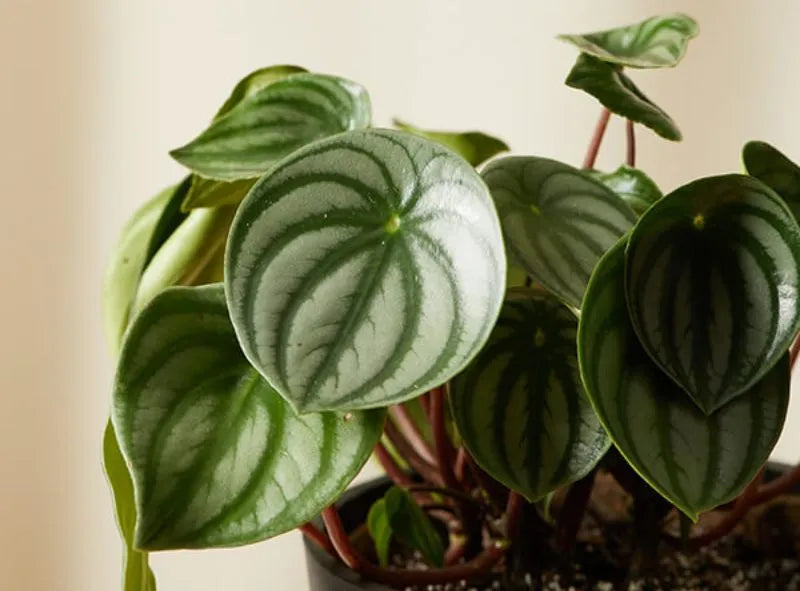Light
Thrives in medium to bright indirect light, but can tolerate low indirect light.
Watering
Water every 1 to 2 weeks, allowing the soil to dry out between waterings. Expect to water more often in brighter light and less often in dimmer light.
Fun fact
More than 1500 species of Peperomia, mainly native to tropical and subtropical regions, have been recorded.
Signs of a sad plant
Withered plant, dry soil: Thirsty
Yellowed leaves, black stems: Overwatered
-------------------------------------------------- -------------------------------------------------- ---------
🪴Are you looking for an easy-to-maintain indoor plant that brings a touch of greenery to your home? Look no further, Peperomia is made for you!
Peperomia is one of the most popular indoor plants thanks to its diversity and ease of maintenance. With over 1700 species, there is a variety of Peperomia for every space and lifestyle.
Let's discover the different varieties of Peperomia, their specific care needs, and why they make excellent houseplants.
The different varieties of Peperomia
Peperomia are pan-tropical plants, meaning they grow above and below the equator in tropical areas.
Although most Peperomia are native to Central and South America as well as Asia, they can also be found in the United States, such as Peperomia obtusifolia variegata in Florida.
Peperomia succulents, like Peperomia graveolens and Peperomia dolabriformis, have thick, fleshy leaves and stems that retain water. These plants are ideal for those who prefer minimal maintenance, as they can survive without watering for long periods of time.
They generally thrive in drier conditions and can even tolerate prolonged periods of drought.
Some varieties of Peperomia, such as Peperomia incana and Peperomia verticillata, have leaves covered in fuzz. This down protects them from the intense sun and helps reduce water loss.
These plants are perfect for areas with indirect or moderate light.
Varieties like Peperomia caperata, available in Pearl and Ripple versions, have leaves with ridges or furrows. This unique texture helps collect and direct water to the roots, which is ideal for environments where humidity can fluctuate.
Peperomia Care Tips
Although some Peperomia varieties can tolerate more intense light, most prefer indirect or moderate light.
For example, Peperomia argyreia (Watermelon Peperomia) does well with diffused light, while more succulent varieties can tolerate brighter light.
Peperomia prefers well-drained soil. A cactus soil mix with perlite and a little bark works great. It is important not to leave the soil too wet, as this can cause root rot.
In general, it is best to water sparingly and allow the soil to dry out between waterings.
Although Peperomia can tolerate low humidity, it thrives best in slightly humid conditions. More succulent varieties can handle drier conditions, while thin-leaved varieties prefer higher humidity.
For the latter, a terrarium type environment may be ideal.
Peperomia benefits from light fertilization during its growth period, from March to October. A diluted liquid fertilizer used every four to six weeks can help promote healthy, vigorous growth.
Propagation of Peperomia
Peperomia propagation is relatively simple and can be done by leaf cuttings. Cut off a leaf with its petiole, plant it in moist soil, and it will develop new roots and shoots within a few weeks.
This method of clonar propagation ensures that the new plant will retain the characteristics of the parent plant.
Peperomia is a versatile and easy-to-care-for houseplant, ideal for plant lovers of all levels.
Its ability to thrive in diverse environments and its wide range of varieties make it a valuable addition to any interior. Whether you are a beginner or an expert, Peperomia can add a touch of greenery and beauty to your home.
🌿Adopt a Peperomia today and enjoy this charming and resilient plant in your living space!


